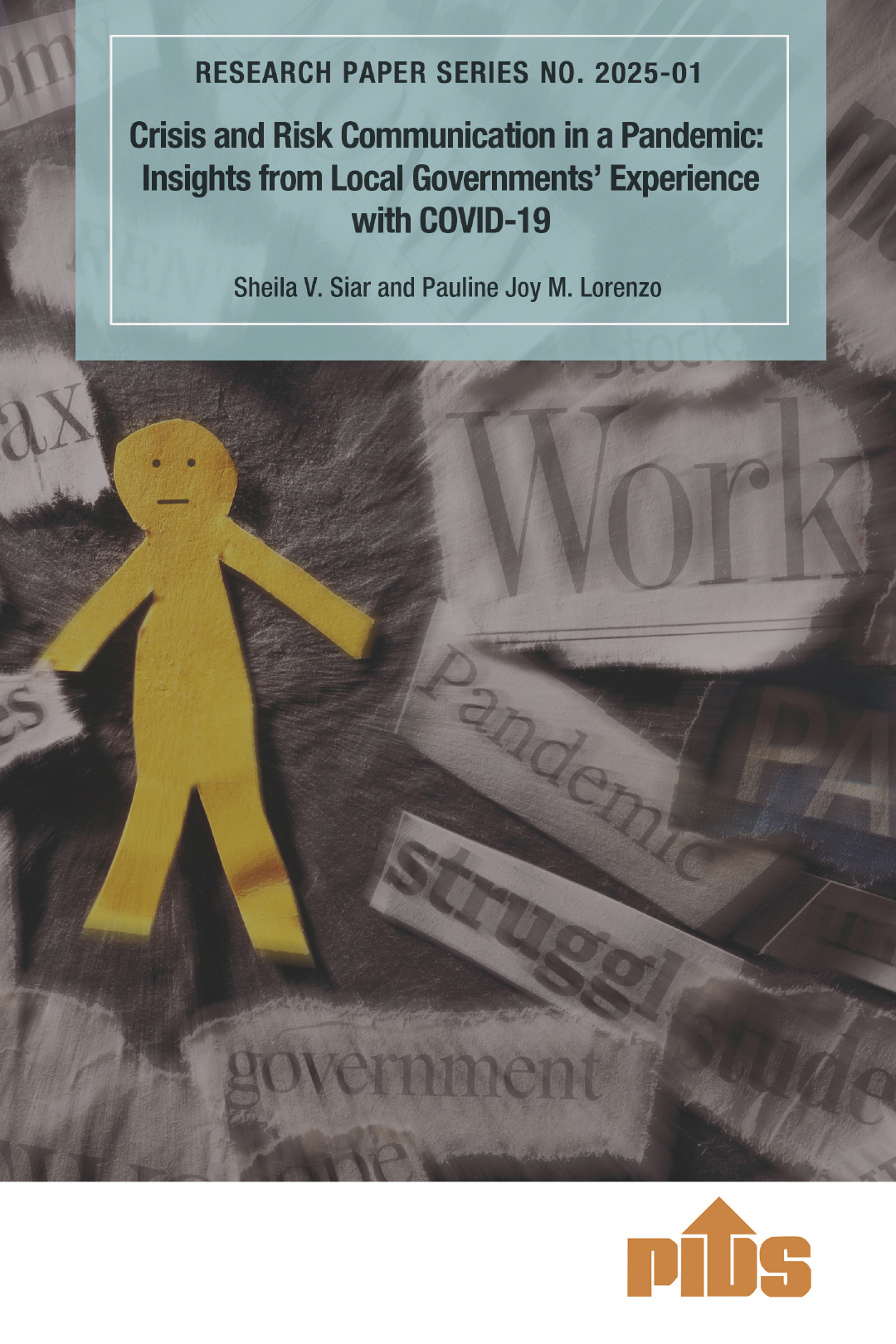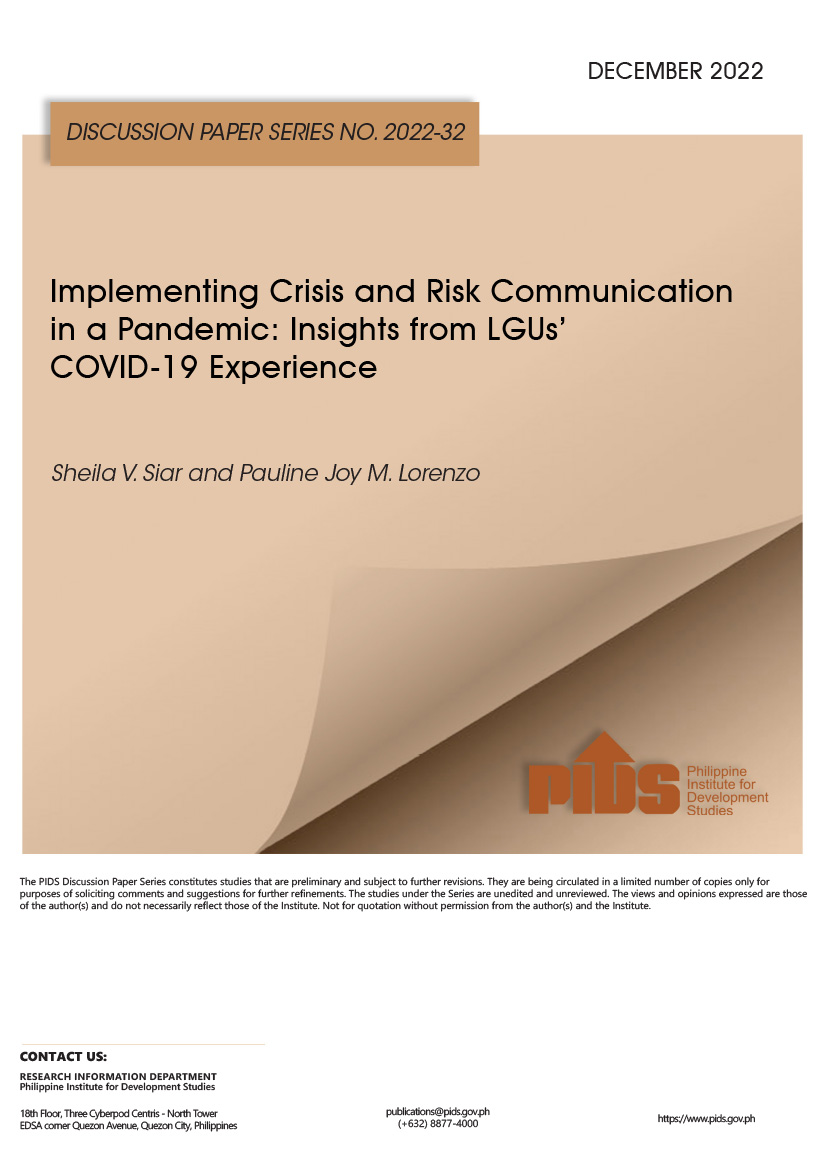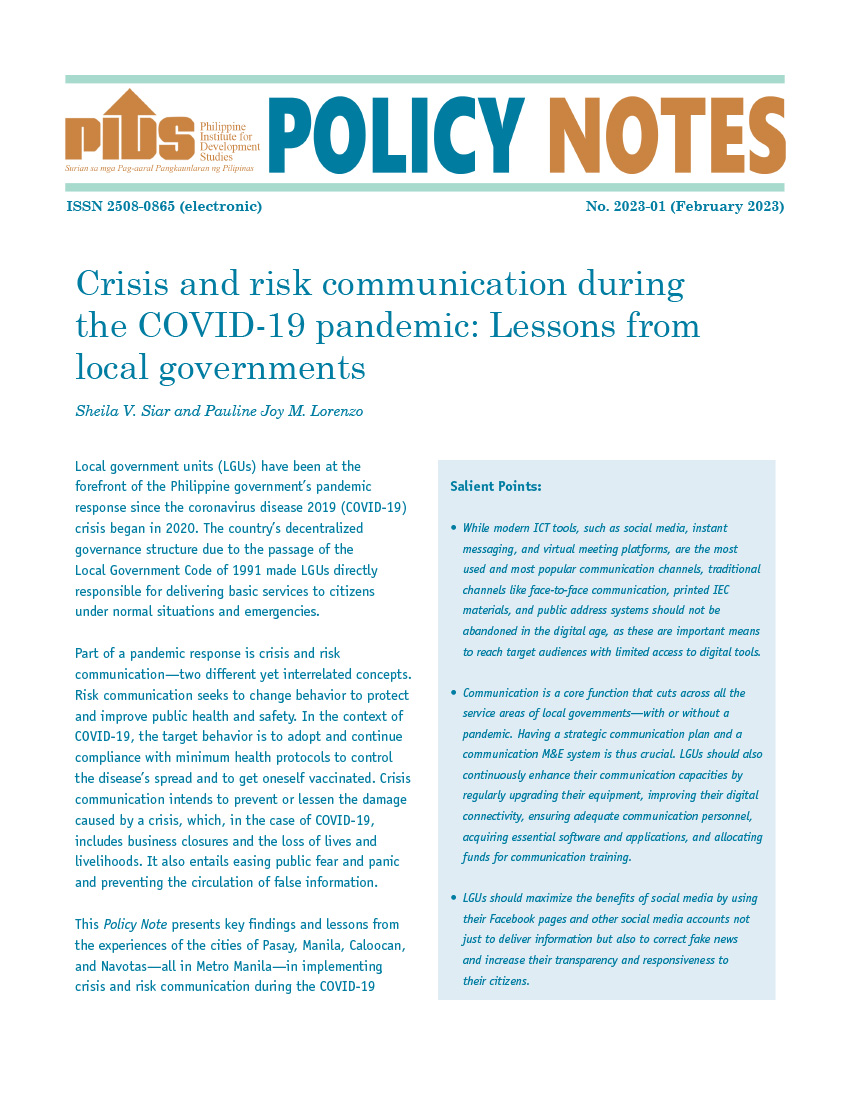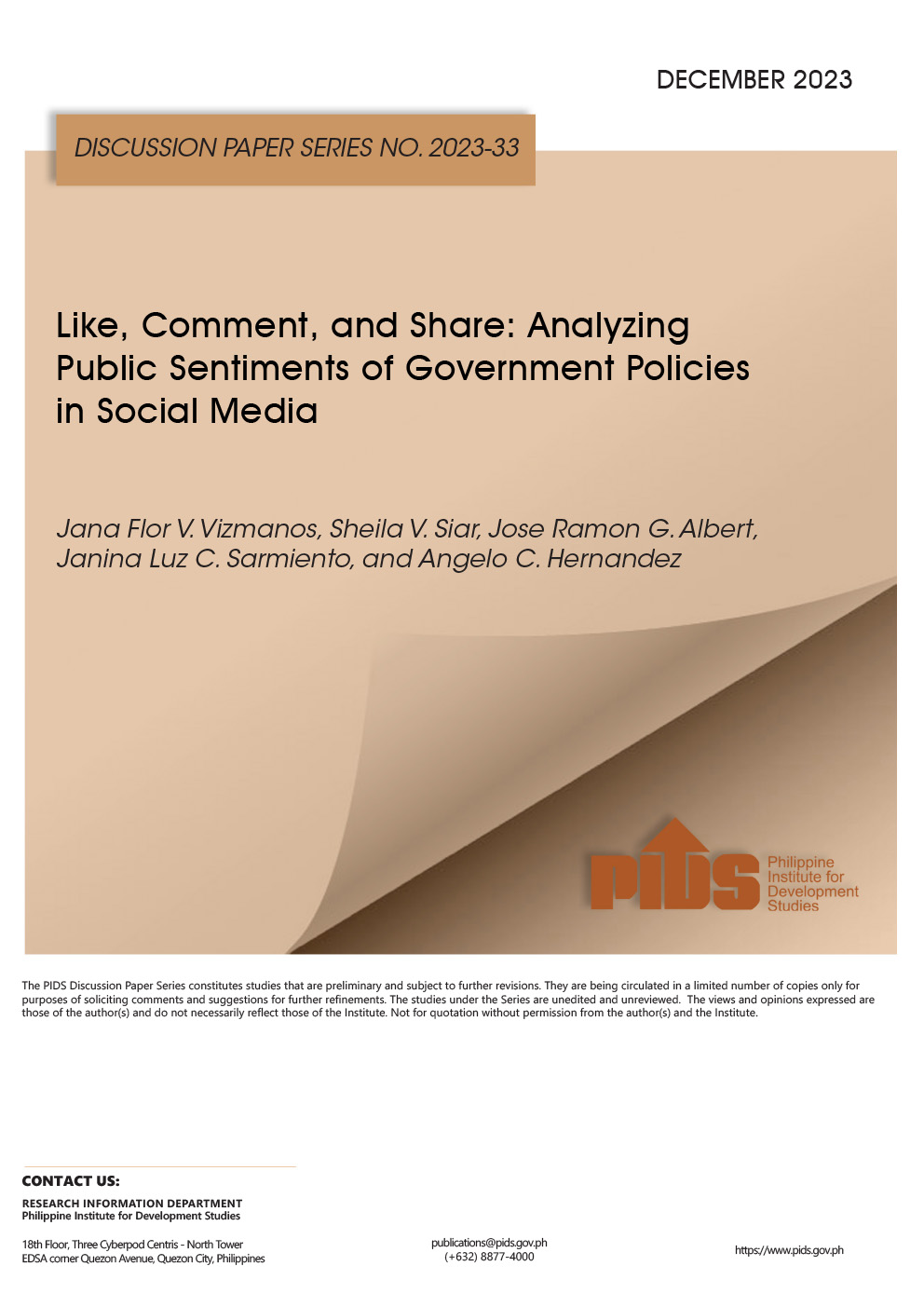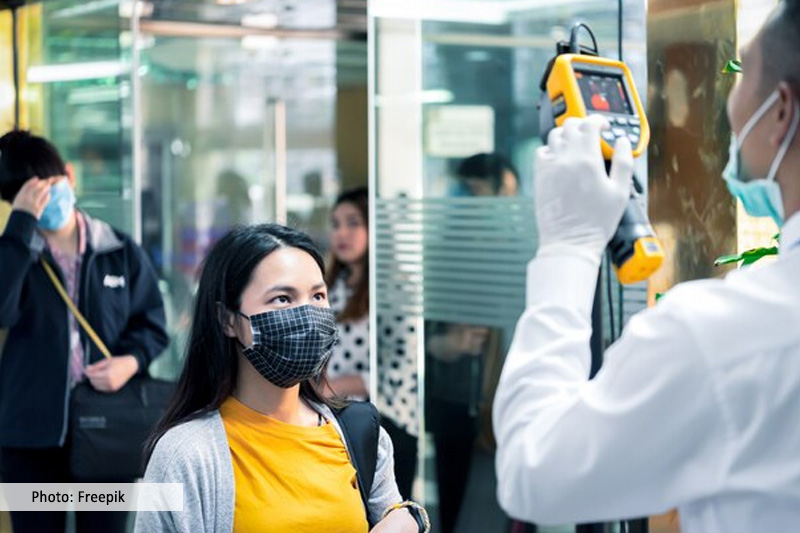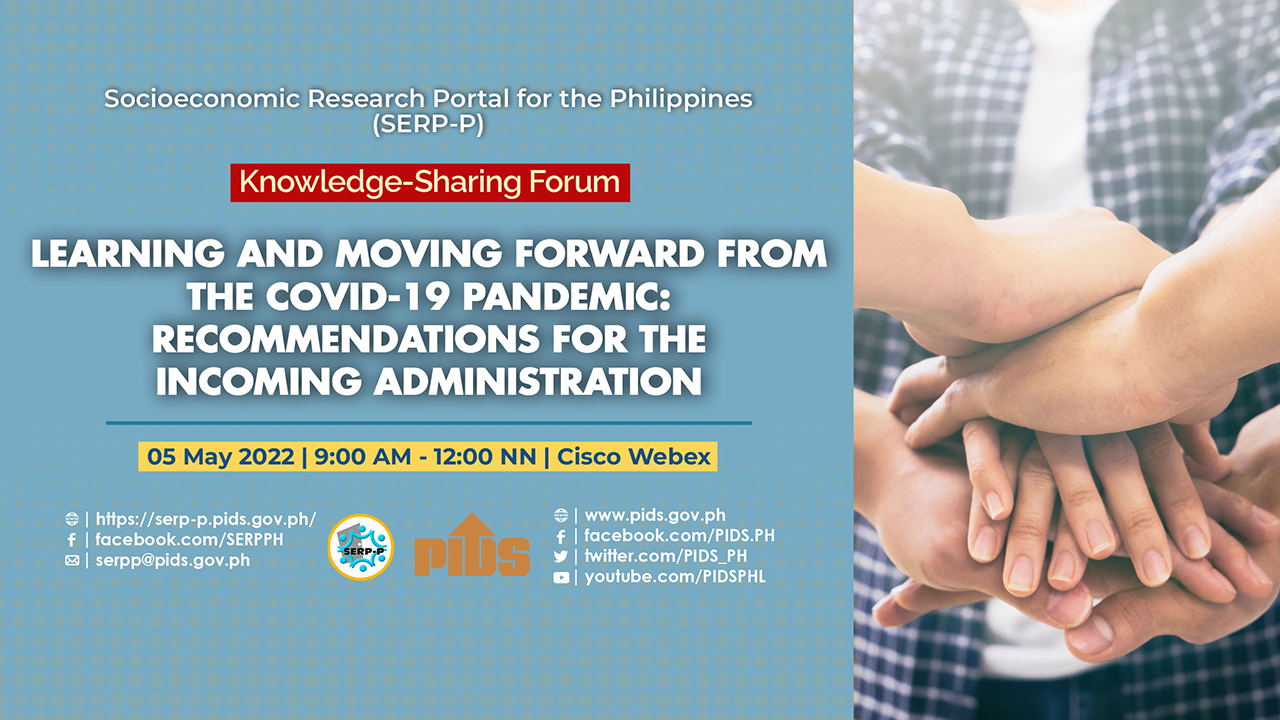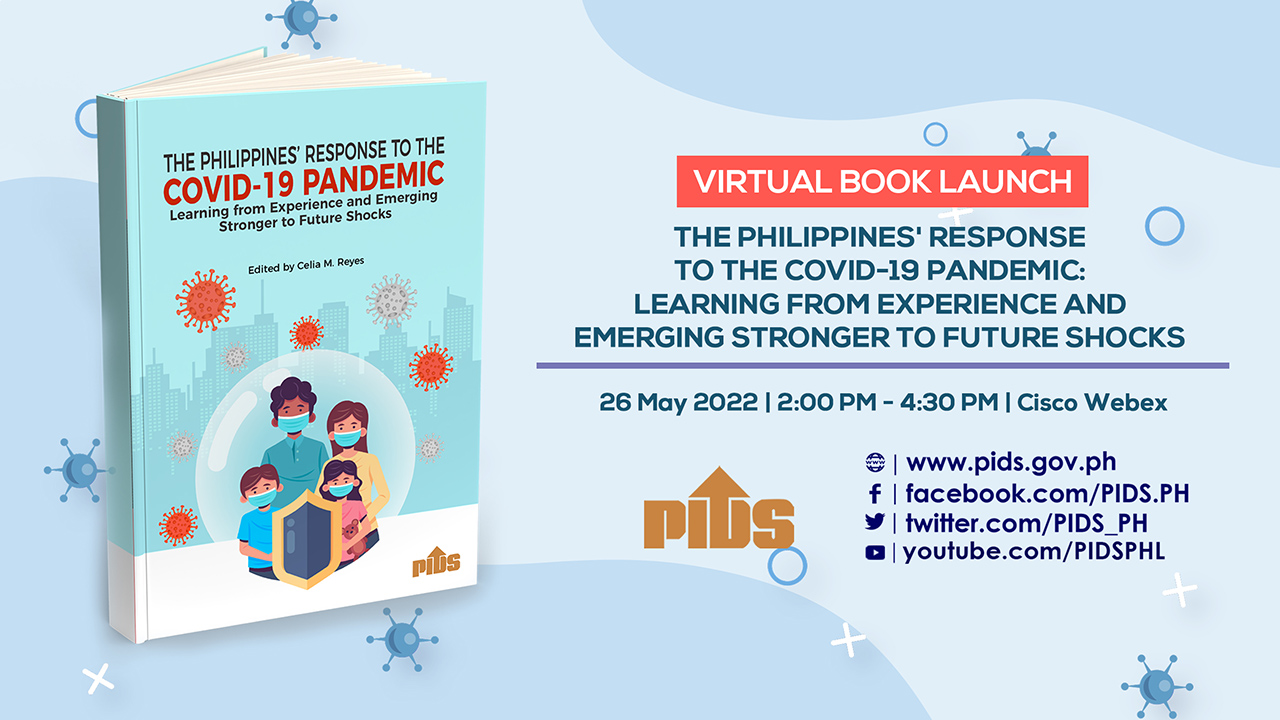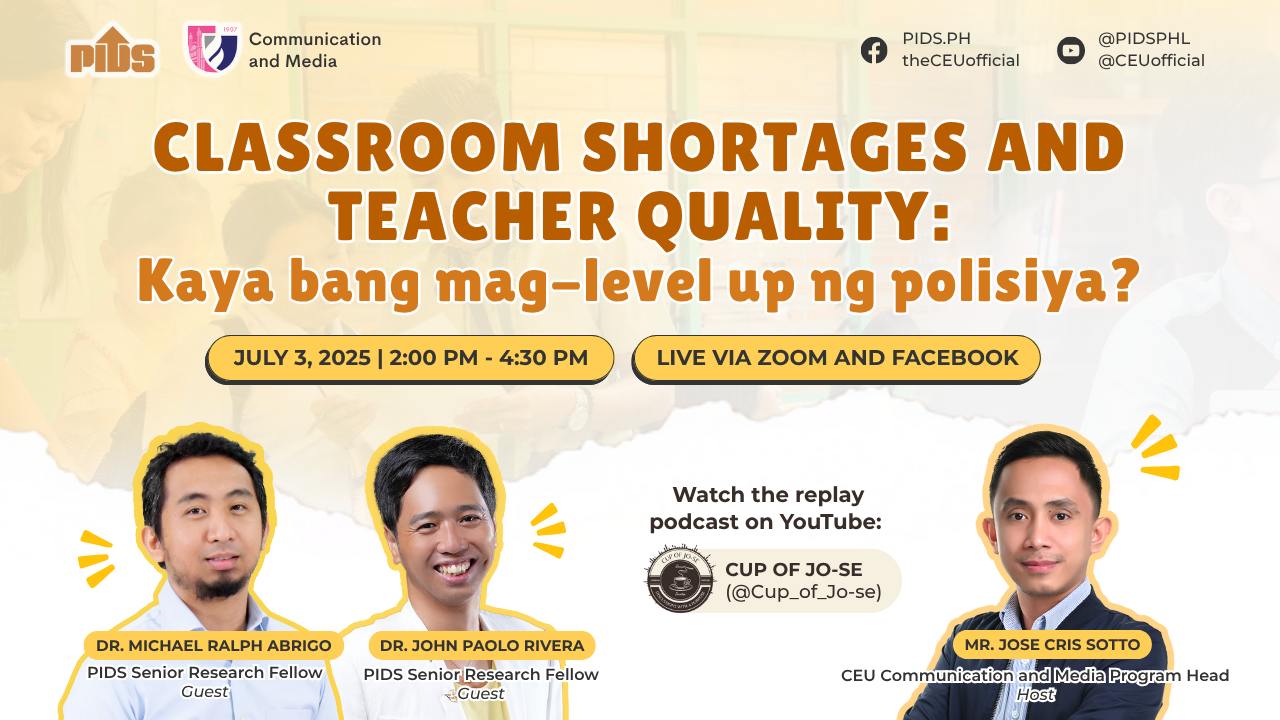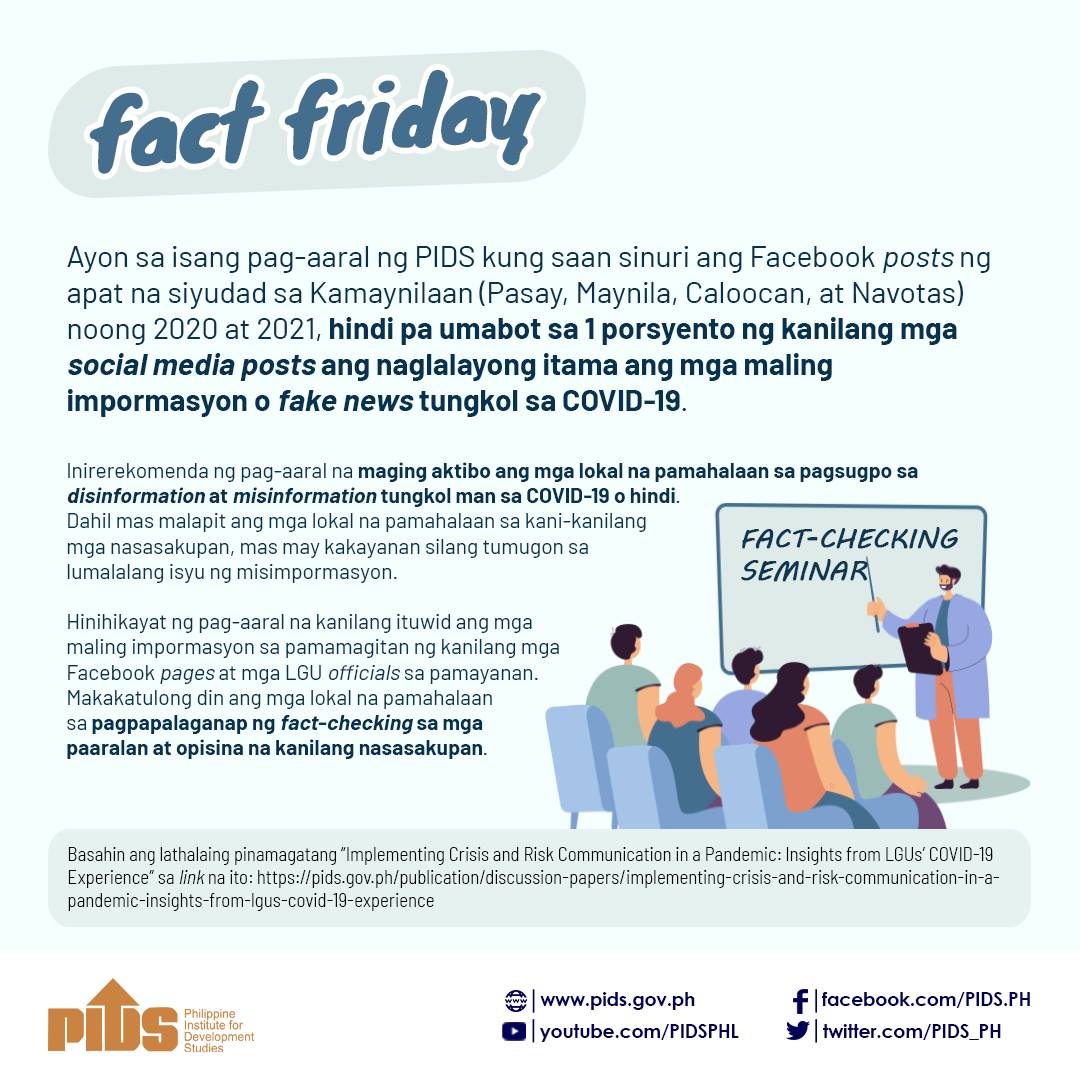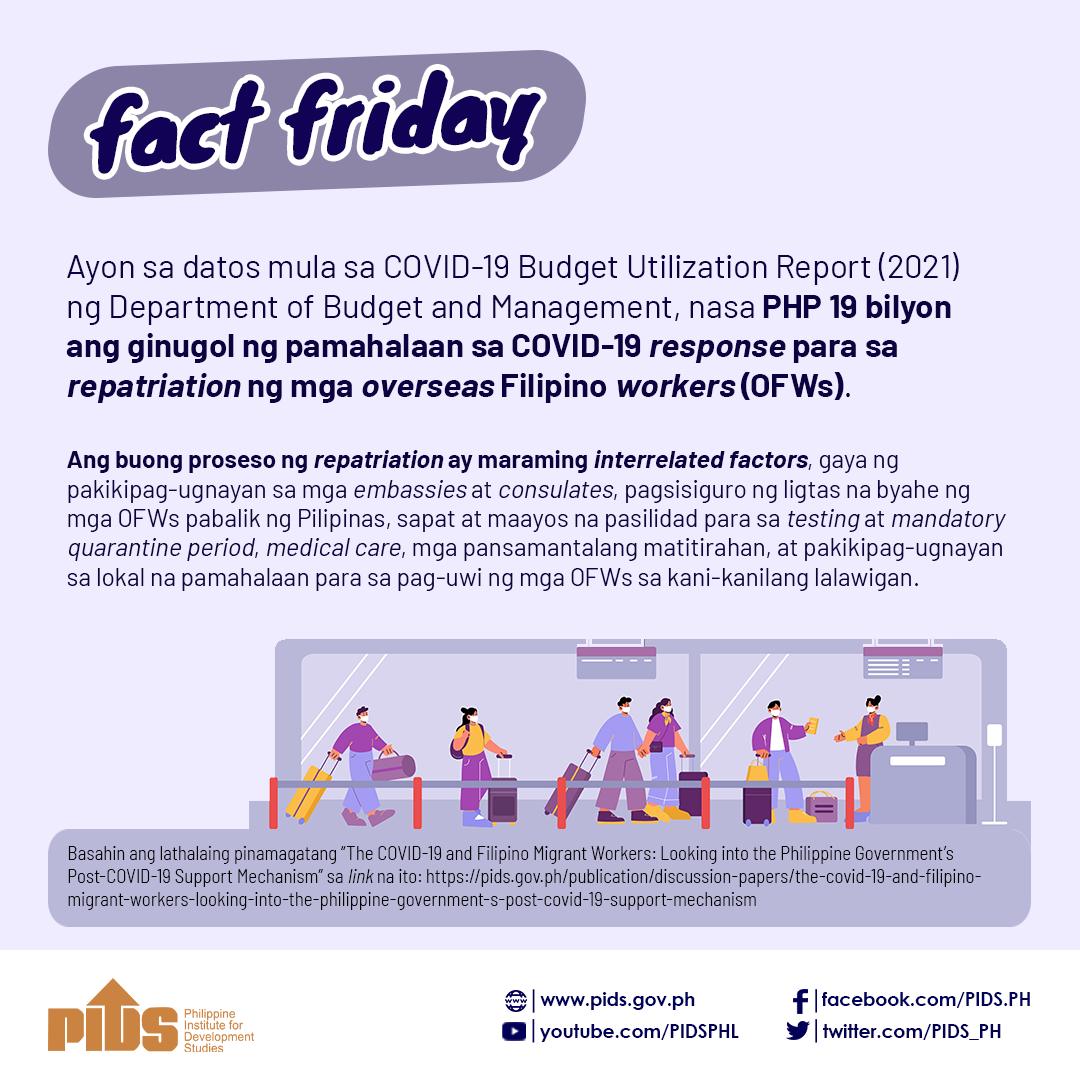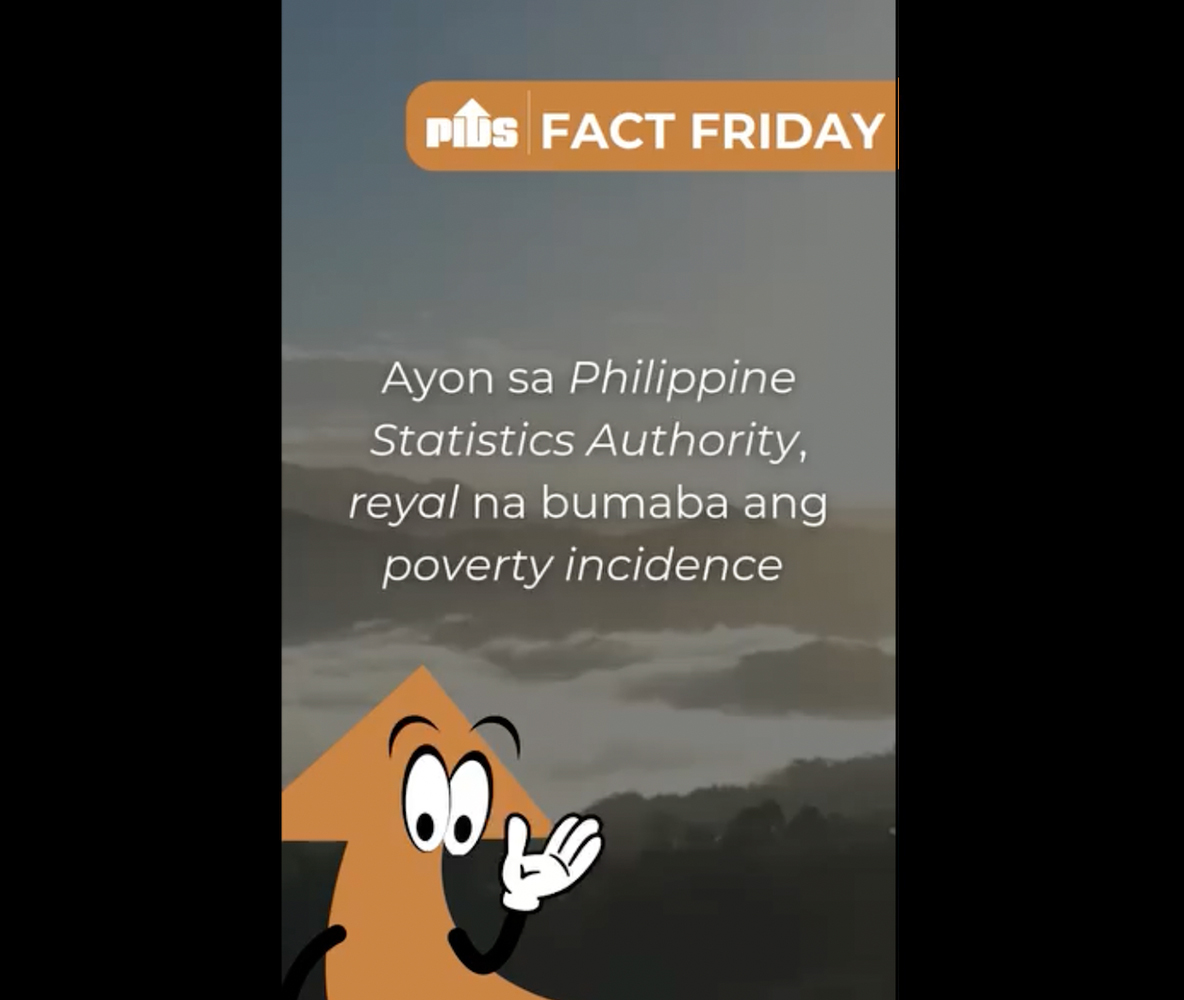Local government units (LGUs) are at the forefront of the Philippine government’s COVID-19 pandemic response. One of their crucial functions is crisis and risk communication to ease public fear, mitigate the pandemic’s damage, and promote the adoption of health and safety protocols. However, only a few studies have examined LGUs’ COVID-19 experience, and no study has delved deeply into the crisis and risk communication strategies of Philippine LGUs. To fill this gap, this study investigated how LGUs communicated with their residents during the pandemic, particularly from 2020 to 2021, following the Crisis and Emergency Risk Communication model. It utilized a mixed method approach encompassing desk review, a cursory audit of national COVID-19 plans and policies, key informant interviews with representatives from Pasay, Manila, Caloocan, and Navotas, and a content analysis of COVID-19-related Facebook posts from these LGUs. The results revealed the LGUs’ lack of a strong preparation phase, highlighting their reactive approach to the pandemic. All four LGUs did not have a communication plan and a monitoring and evaluation system, which hindered the systematic implementation, monitoring, and assessment of their communication strategies. A closer look at their interventions showed that they used a combination of traditional, electronic, and digital communication channels. Digital channels, such as social media, virtual meetings and groups, and online messaging platforms, were largely used and proved useful amid mobility restrictions and the need for physical distancing. Traditional channels remained useful, particularly face-to-face communication whenever possible, printed materials, and interpersonal channels on the ground like barangay officials and health personnel. While social media was largely used, LGUs failed to maximize its potential to combat fake news and enhance their responsiveness to the public. The analysis of the LGUs’ Facebook messages indicated a need for clearer communication by using local languages more frequently, simplifying technical terms, and increasing the use of visual communication. Several contextual factors affected the LGUs’ communication functions during the pandemic. These included delays in receiving official memos on new policies from the national government, rapidly changing guidelines, difficulty in communicating a novel disease, inadequate training in science, risk, and crisis communication, insufficient resources, personal health risks of COVID-19, and spread of false information.

